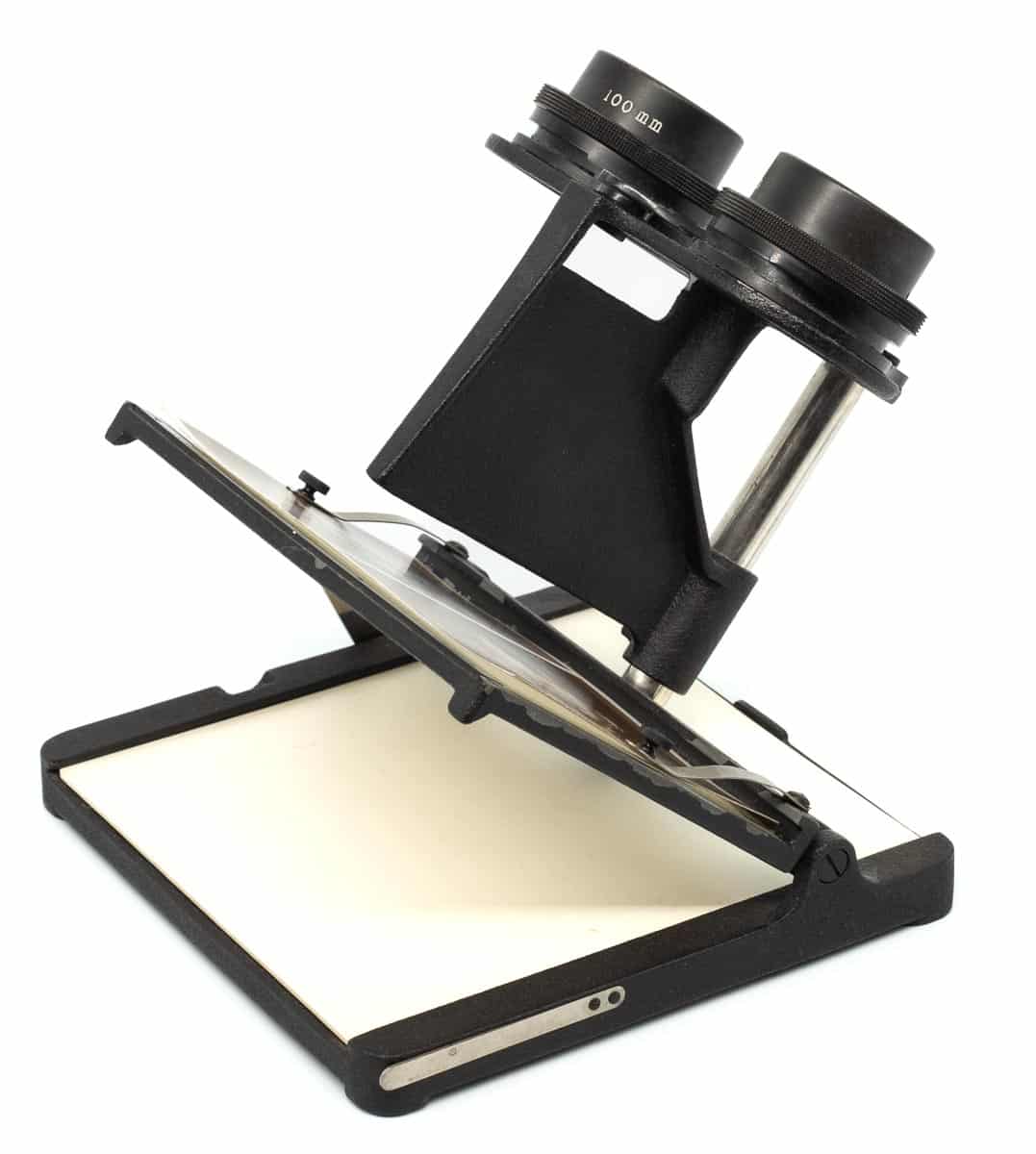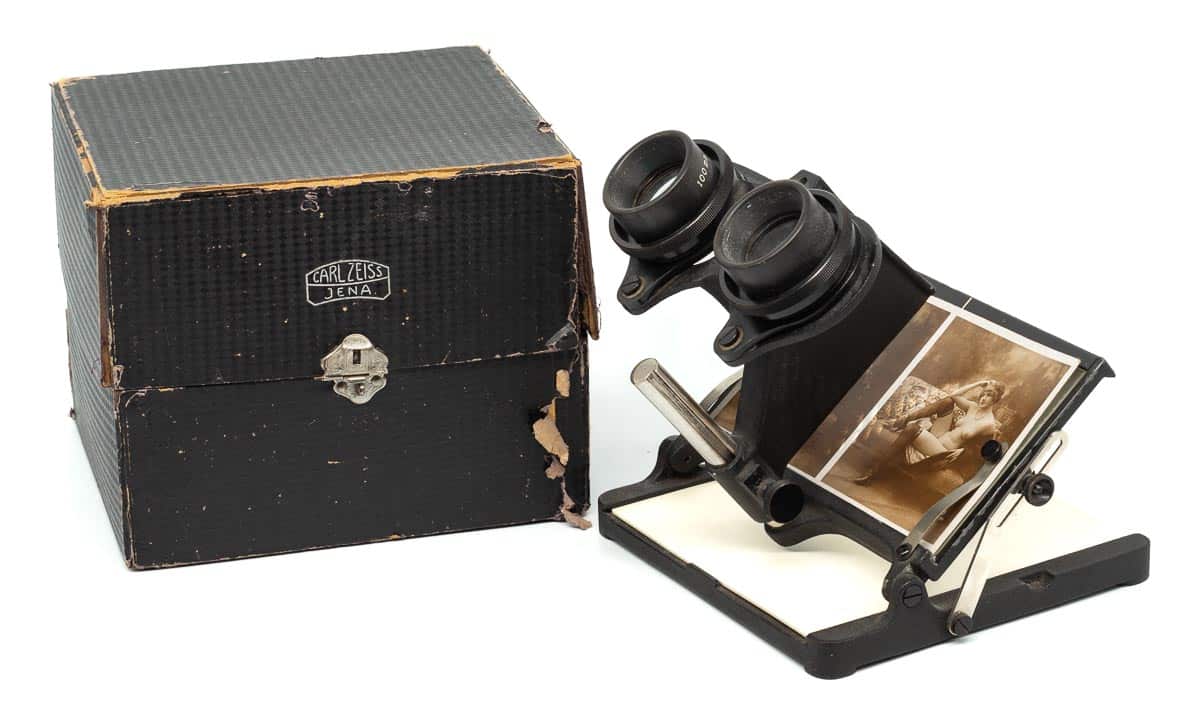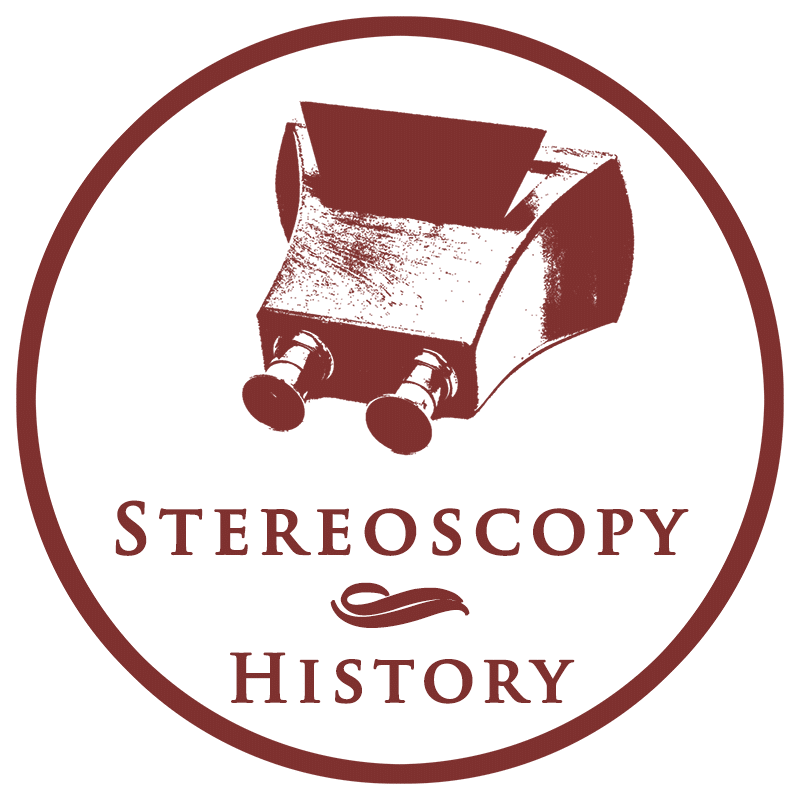
The Verant 9 x 15 cm is a foldable stereoscope that was manufactured by Carl Zeiss Jena. The stereoscope is an open viewer, with a solid metal construction and supports multiple stereoview formats. Zeiss developed various models of the Verant over the years. A larger version for 9 x 18 cm stereoviews was also available. The 9 x 15 cm version was probably introduced earlier than the 9 x 18 cm version.
The Verant consists of three parts: a base plate, stereoview holder and lens panel. A white slide-out plate in the base plate provides a neutral background when viewing glass stereoviews. The holder and lens panel can be set at an oblique angle which improves the viewing experience. It can be adjusted in an angle from 0 to 90 degrees. The Verant can be used for viewing glass stereoviews and paper stereocards. The stereoviews can be placed in the holder and fixed by two metal clips on both sides of the holder. This is especially useful for paper stereocards that tend to curl.

Specifications
| Manufacturer: | Carl Zeiss Jena |
| Year of introduction: | 19031 |
| Year of manufacture: | c. 1905 |
| Type: | Tabletop |
| Viewer: | Single-view |
| Serial number: | 5408 |
| Stereoview support: | Glass and paper card stereoviews |
| Stereoview format: | Max. 9 x 15 cm |
| Lens focussing: | Yes |
| Inter-ocular adjustment: | Yes |
| Eyepiece blinders: | No |
| Dimensions (L x W x H): | 16 x 15 x 16 cm (in viewing position) |
| Construction: | Metal |
| Other features: | The viewer has two 100 mm Verant lenses. This model was acquired with its original cardboard box. |
Glossary: inter-ocular adjustment / single-view / tabletop
Carl Zeiss Jena
Carl Zeiss Jena was founded in 1846 by Carl Zeiss in Jena, Germany. Initially focusing on the production of microscopes, Zeiss’s collaboration with physicist Ernst Abbe in 1866, and later with glass chemist Otto Schott, led to significant advances in optical theory and glass technology. This trio’s innovations revolutionised optical instrument quality and performance, including the development of the apochromatic lens.
The company expanded its product range to include photographic lenses, binoculars, and other optical instruments, becoming a global leader in the field. Throughout the 20th century, Carl Zeiss Jena faced various challenges, including the outcome of the Second World War, leading to the division of the company due to Germany’s partition. The East German part retained the name Carl Zeiss Jena, while the West German operations were re-established in Oberkochen under the name Carl Zeiss. Both companies were reunited after the reunification of Germany. Today, Carl Zeiss Jena is still influential in optics and precision engineering.
References
- Carl Zeiss Jena (1907) Objectifs photographiques, Chambres Palmos. p. 78. ↩︎
